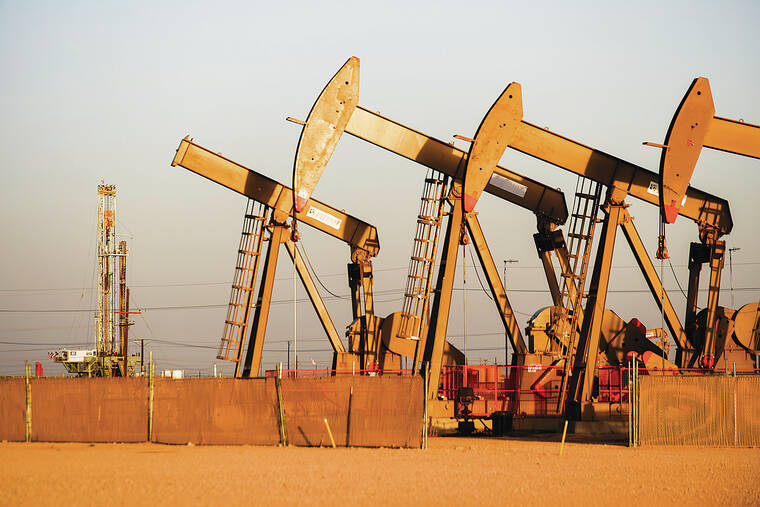Exxon Mobil doubles down on fossil fuels with $59.5 billion deal for Pioneer Natural as prices surge
Exxon Mobil is buying Pioneer Natural Resources in an all-stock deal valued at $59.5 billion, its largest buyout since acquiring Mobil two decades ago, creating a colossal fracking operator in West Texas.
Including debt, Exxon is committing about $64.5 billion to the acquisition, leaving no doubt of the Texas energy company’s commitment to fossil fuels as energy prices surge.
ADVERTISING
Pioneer shareholders will receive 2.32 shares of Exxon for each Pioneer share they own.
“I think fossil fuels, as the world looks to transition and find lower sources of affordable energy with lower emissions, fossil fuels oil and gas are going to continue to play a role over time,” Exxon Mobil CEO Darren Woods said during an interview with CNBC. “That may diminish with time. The rate of that is, I think, not very clear at this stage. But it will be around for a long time.”
Woods explained that Exxon and Pioneer will be able to use their combined capabilities to drive down emissions and produce lower carbon intensity oil and gas.
Exxon purchased XTO Energy in 2009 for approximately $36 billion. In the late 1990s, the merger between Exxon and Mobil was valued around $80 billion.
The deal with Pioneer Natural vastly expands Exxon’s presence in the Permian Basin, a massive oilfield that straddles the border between Texas and New Mexico. Drilling the Permian accounted for 18% of all U.S. natural gas production last year, according to the U.S. Energy Information Administration.
Pioneer’s more than 850,000 net acres in the Midland Basin will be combined with Exxon’s 570,000 net acres in the Delaware and Midland Basin, nearly contiguous fields that will allow the combined company to trim costs.
Woods said in prepared remarks that the combined company will have an estimated Permian resource of 16 billion oil equivalent barrels, with 15 to 20 years of remaining inventory.
Natural gas rigs in operation have declined over 26% in the U.S. since the start of the year, according to government data, largely due to the rising costs for drilling materials and labor over the past two years.
“Their tier-one acreage is highly contiguous, allowing for greater opportunities to deploy our technologies, delivering operating and capital efficiency as well as significantly increasing production,” Woods said of Pioneer in a statement.
Once the deal closes, Exxon Permian production volume will more than double to 1.3 million barrels of oil equivalent per day, based on 2023 volumes. It’s expected to climb to about 2 million barrels of oil equivalent per day in 2027.


